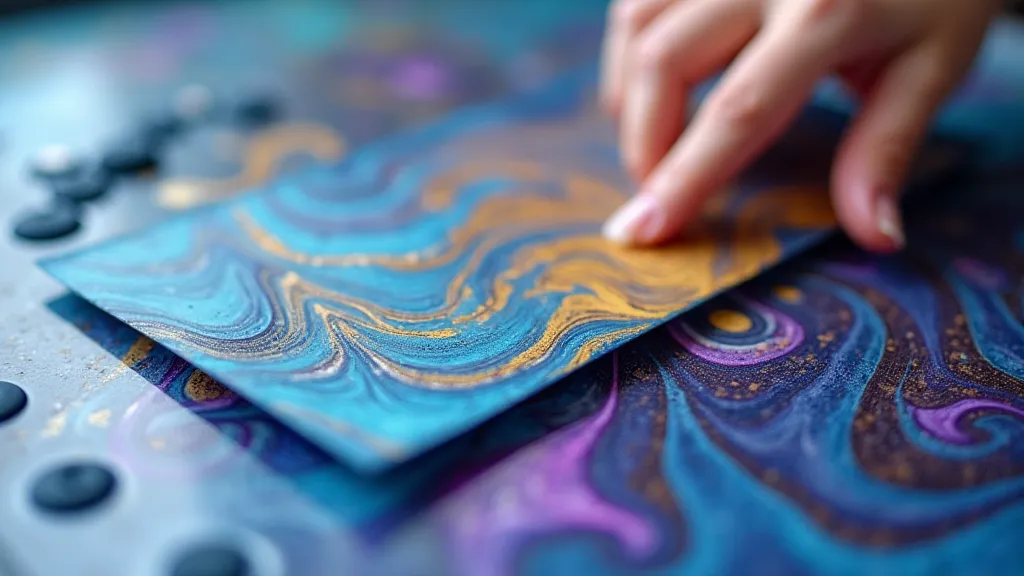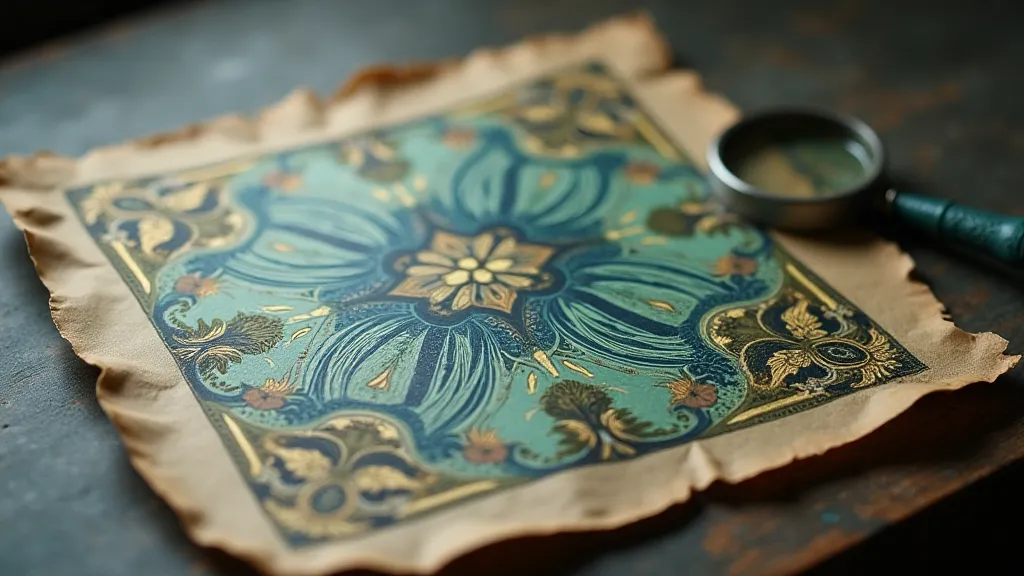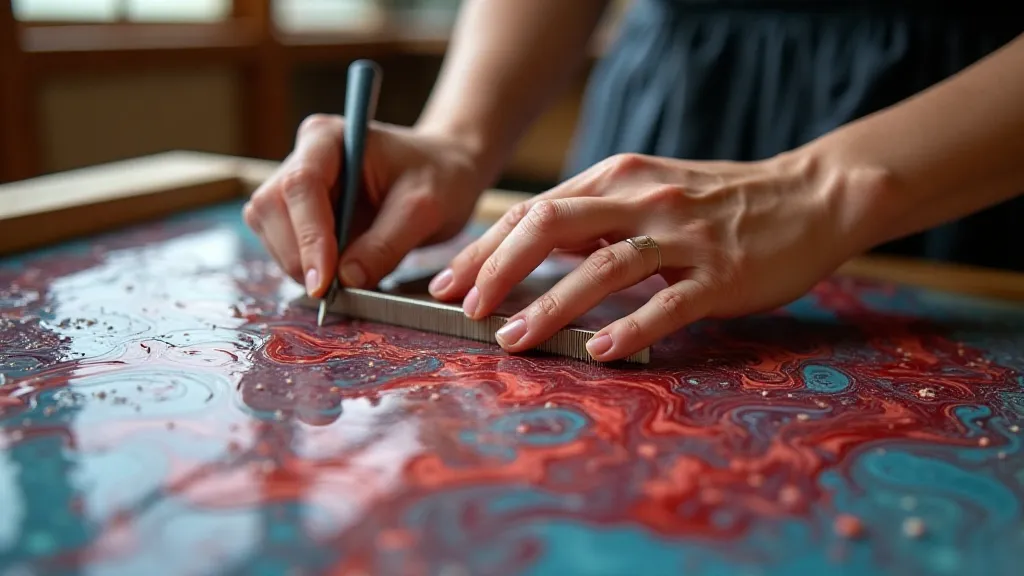The Serendipity of Diffusion: Embracing the Unexpected in Your Writing and Your Marbling
There’s a certain melancholy beauty to antique accordions. The worn bellows, the tarnished keys, the faint echo of music they once breathed out – it speaks of journeys, of laughter, of perhaps, a touch of sadness. My grandfather had one, a Hohner, I think. I never learned to play it, but I spent hours simply watching his hands move across the keys, coaxing out fragments of tunes I didn't recognize. It was a lesson in improvisation, in responding to the instrument, letting the music flow where it would. That feeling, that sense of yielding to a process and discovering something beautiful in its unexpected turns, is remarkably similar to the experience of paper marbling.
A Dance of Colors: Introducing Paper Marbling
Paper marbling, at its heart, is about embracing the unpredictable. It's a process where color floats on a thickened surface, then transfers to paper, creating swirling, organic patterns that are utterly unique. It's an ancient art form, with roots tracing back to 15th-century Persia and Japan, where it was used to decorate books and textiles. The Turkish art of Ebru is perhaps the most well-known iteration, and its legacy is interwoven with the spiritual and artistic traditions of the Ottoman Empire. It wasn’t merely about decoration; it was a meditative practice, a way to connect with something larger than oneself.

The Science & The Soul: Understanding the Process
The science behind paper marbling is relatively simple. You need a "size" – a thickening agent, usually carrageenan or methylcellulose – dispersed in water. This creates a surface on which the pigments can float. The pigments themselves are often powdered paints or inks, carefully mixed with a dispersant to prevent them from sinking. Then, you have the moment of truth: dropping the colors onto the surface, manipulating them with tools like rakes, combs, or brushes – and then, finally, gently laying a sheet of paper onto the shimmering surface.
But the science is only a framework. The magic lies in the interaction of the chemicals, the water, the air—and most importantly, the artist’s touch. Small variations in temperature, humidity, or the balance of chemicals can drastically alter the outcome. This inherent unpredictability is what makes each marbled paper a singular creation. There are techniques – suminagashi, Suminuri, and countless others – which prescribe certain tools and approaches, but ultimately, it's the willingness to experiment, to accept the unexpected, that yields the most rewarding results.
Finding Resonance: Parallel Journeys of Art and Writing
The parallels between paper marbling and the writing process are striking. Consider the blank page, the daunting expanse of possibility. Much like the surface of the marbling bath, it feels vast and potentially overwhelming. You begin, tentatively, placing words, sentences – little bursts of color – onto that emptiness. You might have a plan, a structure, an intended narrative. But as you write, as the words flow, the story begins to take on a life of its own. It twists, it turns, it surprises you. Just when you think you have it figured out, a new idea emerges, a different direction presents itself – and the story shifts, subtly or dramatically.
Like the marbler who can’t entirely control the swirls and patterns that emerge, the writer must learn to relinquish a degree of control. To embrace the digressions, the unexpected turns of phrase, the insights that arise from the subconscious. The most compelling stories, like the most beautiful marbled papers, are often those that defy easy categorization, that contain an element of surprise, an echo of something deeper.
The Collector’s Eye: Preservation and Appreciation
The antique world offers a similar perspective. Consider restoring an old accordion. It's not simply about repairing the physical instrument; it’s about uncovering its history, understanding its journey. The cracks in the bellows, the worn keys—they're not flaws, they're testaments to a life lived. The conservator’s role is to stabilize the piece, to reveal its beauty, to allow it to continue to resonate with future generations. It’s a process of gentle intervention, respecting the instrument’s original character while ensuring its longevity.
Similarly, appreciating antique marbled paper isn’t about judging it against a standard of perfection. It’s about recognizing the skill, the artistry, and the historical context. A slight imperfection—a bloom, a streak—can be a mark of authenticity, a reminder of the human hand involved in its creation. Collecting these pieces is akin to collecting fragments of history, each sheet a silent witness to a bygone era. There's a certain responsibility that comes with this appreciation, a desire to preserve these fragile echoes of the past.

Beyond Technique: Finding Your Own Diffusion
Ultimately, whether you're crafting a marbled paper, writing a story, or restoring an antique instrument, the key is to embrace the serendipity of diffusion. To allow the process to unfold, to welcome the unexpected turns, and to find beauty in the imperfections. Don't strive for control; strive for connection – to the materials, to the history, to your own creative impulse.
My grandfather’s accordion taught me that true artistry isn't about mastering a technique; it's about surrendering to the moment, letting the music flow, and discovering the beauty that lies within the unpredictable.






